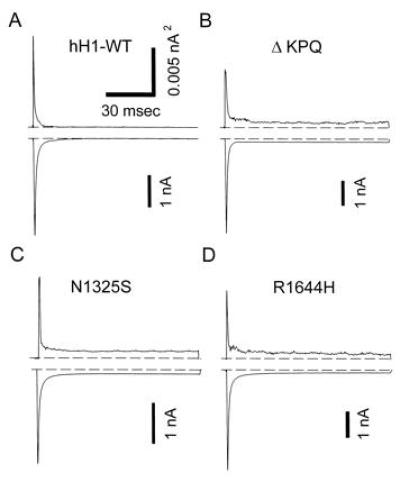Figure 1.

Whole-cell recording of WT, ΔKPQ, N1325S, and R1644H human heart Na+ channels expressed in HEK293/tsA201 cells. Voltage clamp steps of 100 ms duration to −20 mV from a holding potential of −120 mV were applied every 5 sec. The average of 20 consecutive recordings is shown along with the variance computed during the averaging process. The nonstationary variance is a sensitive indicator of gating. Note the non-zero variance that occurs after 20 msec in the mutant channels. The ensemble variance, σ2, is related to channel gating according to the following relationship: σ2 = P (1 − P) N i2, where P is the open probability, N is the number of channels, and i is the single channel current. N and i are constants at a particular membrane potential. The variance is a sensitive measure of continued channel gating. As channels inactivate, the variance and current drop to zero. The mutant channels show a sustained sodium current that persists after the WT channels have inactivated. This late gating activity is reflected in the non-zero variance that exists during the prolonged depolarizations.
